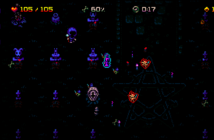There are very few bands in the modern rock scene that are as accomplished as The Dear Hunter. For a relatively unknown rock band from Rhode Island, they have an incredibly avid fan base, they feature a full orchestra in much of their work, have released seven studio albums, including a two and a half hour long piece intended to interpret the color spectrum in sound instead of visuals, and the singer, Casey Crescenzo, has composed a symphony that debuted at #1 on the classical charts in 2014. With their most recent release, titled Act V: Hymns With The Devil In Confessional, the band has managed to continue their streak of truly exceptional releases.
Most of The Dear Hunter’s albums follow the story of an eponymous character at the beginning of the 20th century, as he progresses through his life. Act V is the fifth of six planned albums that follow this tale, and takes on a more somber tone as it follows the main character confronting various demons in his life.
The album begins on a quiet note, with the minute-long intro track “Regress.” This track opens softly, focusing on the orchestral elements of the band as well as Crescenzo’s soaring tenor vocals. It quickly transitions into “The Moon/Awake,” which is a faster song, though it continues the more orchestral themes, which are incredibly prominent in Act V.
The album continues to pick up speed with “Cascade,” one of the best songs on the album. The band’s rock elements are highlighted in conjunction with the orchestration, and Crescenzo’s vocals soar above it all, tying the entire song together perfectly.
“The Most Cursed of Hands/Who Am I” continues this excellence. The song itself plays with many elements of folk music, including using a banjo in conjunction with the guitar, before culminating in an intense finale featuring some of the album’s best singing mixed over dueling guitar and banjo.
“The Revival” was one of the singles released with the album, and plays more like a traditional rock song, though the ending shifts back into the band’s usual style, still featuring the orchestra. The song is driven primarily by Crescenzo’s vocals and a strong bass line from Nick Sollecito. The song leads right into “Melpomene,” a much softer song, highlighted by the orchestra’s string and woodwind sections. Crescenzo’s vocals are, as always, beautiful, but the instrumentation in this particular song is what makes it truly beautiful.
One of the oddest songs on the album is “Mr. Usher (On His Way To Town),” which feels more like a swing song out of the 1940s than it does a modern rock song, although it does still have some rock flourishes, like some guitar licks at the end of every verse, a synthesizer behind the bridge, and a guitar solo near the end.
Following this oddity is “The Haves Have Naught”. This song highlights the more theatrical elements of The Dear Hunter, as Crescenzo’s vocal performance feels like it belongs on a broadway stage, and the orchestra accompanies him with a more traditionally classical backdrop.
“Light” was the final single released before the album. It is the closest that the album comes to a traditional soft- rock song. It’s driven by a single soft guitar, and the vocals are more muted and less theatrical than many of the other tracks. It is, however, one of the more lyrically emotional tracks, and to simply see it as the “safe” song on the album would be doing it a disservice.
“Gloria” was the first single released, and is on of the more underwhelming songs on the album. It feels like traditional The Dear Hunter, and really does not do much to amaze, although there are a couple strong vocal moments on the album.
“The Flame (Is Gone)” and “The Fire (Remains)” form a small suite near the end of the album. While technically two separate songs, they feel like they are meant to flow together, and both feature swooping instrumentals supplemented by some of Crescenzo’s best vocals on the album.
“The March” is another odd song, featuring a very rhytmic drum and bass line throughout, as well as a hammer dulcimer, and some more theatrical vocals from Crescenzo. Although undoubtedly an odd song, even for this album, “The March” is also one of the best, with a beat that is particularly easy to bob one’s head to. It also contains a brief homage to “The Old Haunt,” a song from their previous album “Act IV: Rebirth In Reprise.”
“Blood” starts off incredibly slow, but alternates between some of the softest music on the album, and some of the most intense, with Crescenzo crooning out soft verses, and then belting out bridges between them.
The album comes to a close with “A Beginning.” The song is a fitting conclusion, as it is a strong performance from the band, and sticks close to their usual sound. Even though the album is full of musical experimentation, the closing song shows that The Dear Hunter can still create wonderful music in their original style.
Though not their best album, as that honor goes to “The Color Spectrum,” “Act V: Hymns With The Devil In Confessional” is an incredibly strong showing from The Dear Hunter, and speaks of great things to come if the band continues in this direction. I would give the album a 4.5/5.




